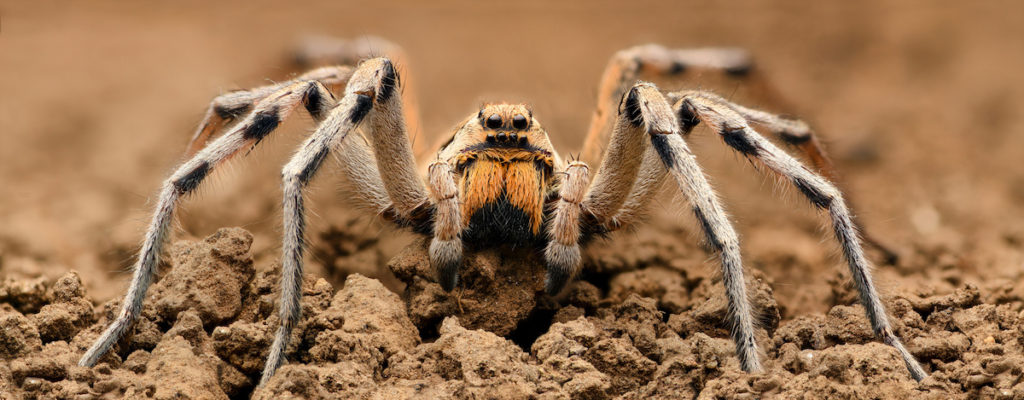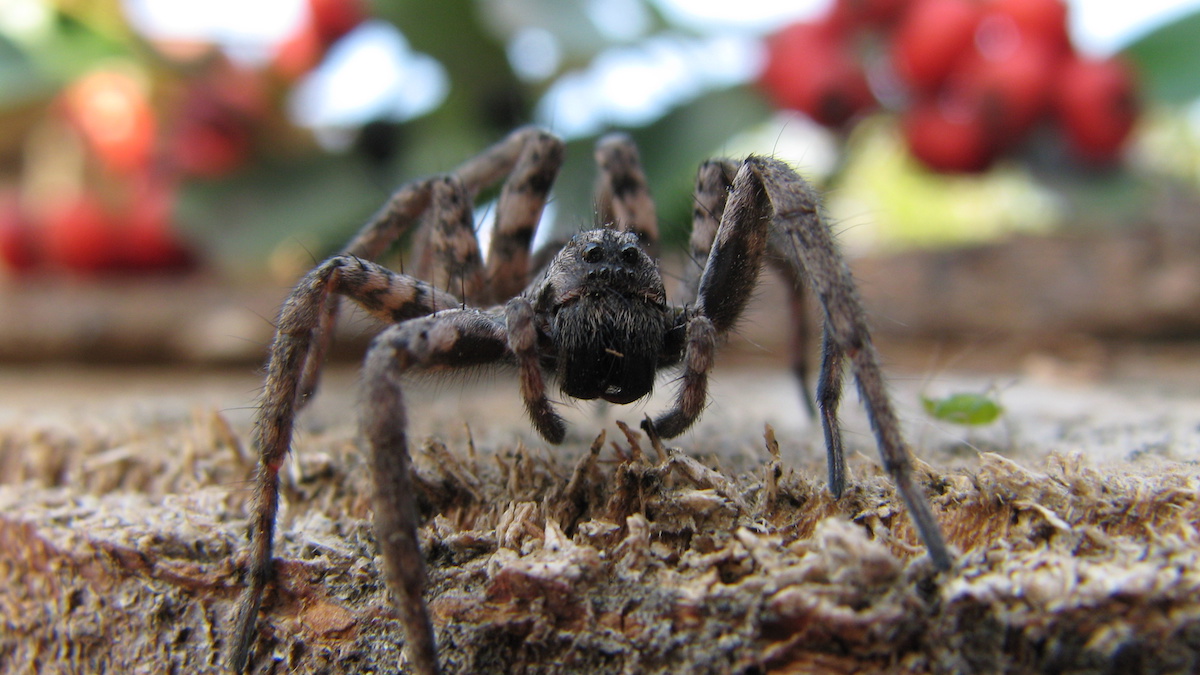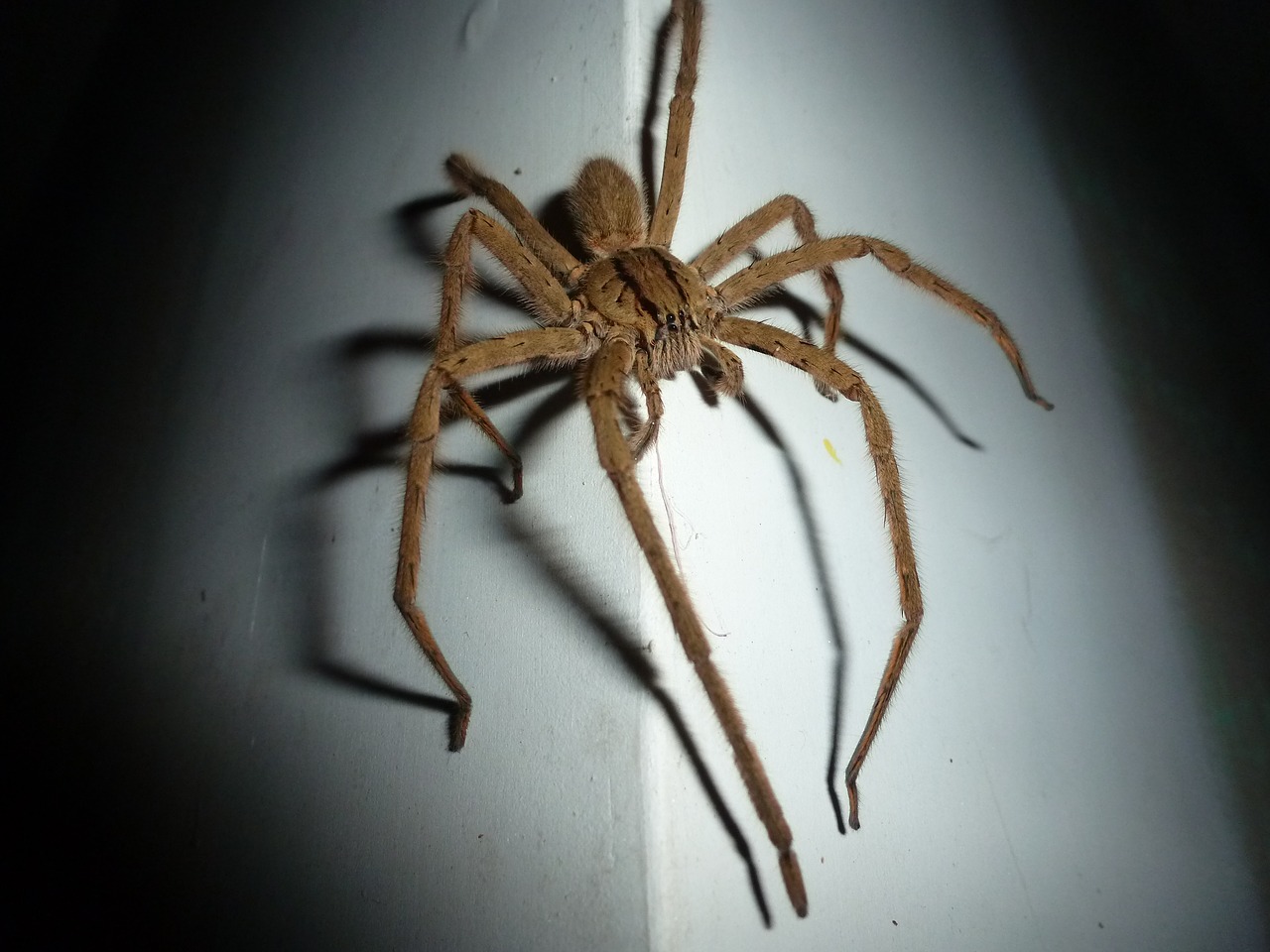
More Pest ID
- Acrobat Ants
- American Cockroach
- American Dog Tick
- Argentine Ants
- Asian Roach
- Bed Bugs
- Big Headed Ant
- Black Legged Tick
- Black Widow Spider
- Brown Banded Roach
- Brown Dog Tick
- Brown Widow Spider
- Cellar Spider
- Crazy Ant
- Dry Wood Termites
- Elongated Twig Ant
- Fire Ants
- Florida Carpenter Ants
- Florida Woods Roach
- Formosan Termites
- German Roach
- Ghost Ants
- Jumping Spider
- Little Yellow Ant
- Lone Star Tick
- Oriental Roach
- Pavement Ants
- Pharaoh Ants
- Pyramid Ants
- Rover Ant
- Smokybrown Roach
- Subterranean Termites
- Thief Ant
- White-Footed Ant
- Yellow Sac Spider
Adaptive and abundant, Wolf Spiders are found all over the world. In the United States alone, there are over two hundred different species of Wolf Spider.
Unique traits make these creepy crawlers stand out among their spider relatives.
Wolf Spiders are ground dwellers who live in various habitats and are vital parts of the environments they occupy. Unfortunately, Wolf Spiders often find their way into small spaces of your home or the taller grasses of your yard.
Not to worry, the Wolf Spider is hardly a threat, and the experts at Drive-Bye Exterminators have all of the knowledgeable tools to be prepared.
Wolf Spiders are large and quick on their feet. They often frighten a person who is unfamiliar with the virtually harmless creature. The identification and fascinating lifestyle of Wolf Spiders can be found here on this Pest ID page.
Facts About the Wolf Spider
Appearance
Female Wolf Spiders are often larger than males, ranging from ¼ to 1 inch. Both sexes have long, dark legs.
The Wolf Spider camouflages from nearby predators and targets prey with dull colors and confusing patterns. Their bodies vary in color- black, brown, or grey. They are mainly identified by their black or brown marks. The most common designs are stripes.
Another unique quality of the Wolf Spider is its “distinctive eye arrangement.” Jo-Anne Nina Sewlal describes their eerie appearance.
“The front or anterior row is composed of four small eyes of roughly the same size arranged in almost a straight row. The back or posterior row is arranged in a V-pattern with the apex next to the anterior row.”

Behavior
Some female Wolf Spiders will become more aggressive when caring for their eggs. After mating, the female Wolf Spider will attach her egg sack to the base of her abdomen. She will continue her usual hunting, hiding, and feeding schedule, all with the eggs tagging along. If the egg sack detaches, she will likely scatter around frantically trying to relocate her young.
Once hatched, the baby spiders will climb onto their mother’s back and remain there for two or more weeks. The Wolf Spider is often studied explicitly for its parental traits. Researchers continue to discover more.
The Wolf Spider is highly evolved and differs from the typical spider in many other ways.
- Wolf Spiders do not spin webs. Instead, they spend their lives on the ground or scaling up trees.
- On average, most of their hunting and feeding is done at night, making the Wolf Spider a primarily nocturnal animal.
- Because they don’t have webs to catch their prey, Wolf Spiders either chase them down or patiently wait for food to come near.
- They are typically solitary creatures but can be found gathered in the thousands.
- Incredible night vision gives the Wolf Spider an advantage over predators in the dark.
Diet
Small insects make up most of a Wolf Spider’s diet. In certain situations, a female may successfully chase down small vertebrates. Wolf Spiders will even consume smaller species of spiders.
Habitat
Wolf Spiders are intelligent and can make a home almost anywhere. They are wanderers who hide in vegetation or sand, but some Wolf Spiders will dig tunnels or burrows. These spiders can be territorial of their homes, while others do not claim one at all.
Wolf Spiders are commonly found in the following places:
- Crawling in gravel or sand
- Perched near streams or another water source
- Hidden in short grasses or bushes
- Buried in leaf litter

Have You Spotted a Wolf Spider in the House?
For most people, the ominous size and appearance of the Wolf Spider send shivers down their spine. Seeing one of these inside your Florida home is certainly something you don’t want to happen, but it’s not uncommon. Suppose you live in a rural or remote area. In that case, it is even more likely that you will eventually encounter a Wolf Spider.
Where Do Wolf Spiders Hide in Your House?
- Closets
- Garage
- Basement
- Small, dark spaces
Where Do Wolf Spiders Hide in Your Yard?
- Piles of raked leaves
- Gardens
- Tall grass or weeds
- Fallen leaves from surrounding trees
- Gravel and sand areas
Are Wolf Spiders Dangerous?
Wolf Spiders are a typically harmless pest in your home or yard. The bite of a Wolf Spider is rare and only occurs when the spider is mishandled or feels threatened. And, while there may be some pain, most healthy adults are not affected by a Wolf Spider bite.
If a child or unhealthy individual is bitten, it is important to monitor them for symptoms. It is uncommon for humans to be at risk when faced with a bite from a Wolf Spider, but still possible.
What to Do If You Encounter Wolf Spiders in Your Home or Yard
If you suspect Wolf Spiders are in your home or yard, you can look for them by shining a flashlight to the ground.
Remember that Wolf Spiders are typically nocturnal and have impressive night vision. Like cats, the light causes a bright green reflection in the spider’s eyes. At night, scan the flashlight around your yard in the small spaces of your home to see their gleaming green eyes – a clear indicator of a Wolf Spider infestation.
Whether threatened by the presence of a Wolf Spider or simply bothered, call an exterminator to deal with these dangerous pests.
Furthermore, to eliminate your Wolf Spider problem, call Drive-Bye Exterminators today.
Drive-Bye Exterminators pest control company gives you complete Wolf Spider extermination and stops the potential threat to you and your family.
Drive-Bye Exterminators offers home and commercial pest control services in Clearwater, Florida, and the surrounding areas. Family-owned and operated for over 25 years, Drive-Bye Exterminators has state-certified inspectors, and exterminators provide services to both commercial and residential clients.
Contact us today to schedule an appointment with one of Florida’s best pest control companies.






